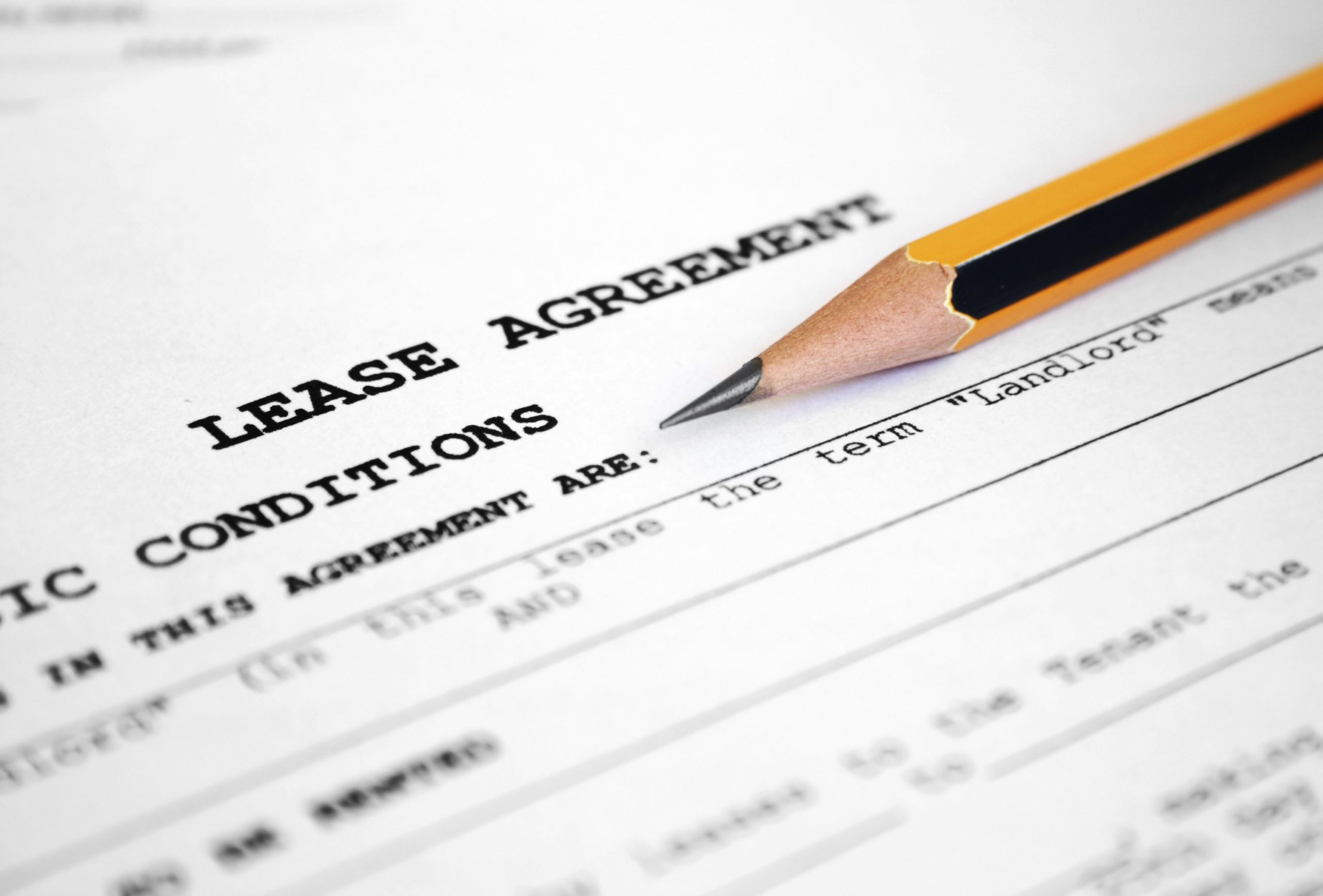What is the Difference Between Freehold and Leasehold?
Whether you are using bridging loans in London or anywhere in the UK, it usually involves purchasing some kind of property and understanding the difference between the freehold and leasehold of the property is key. It greatly affects your rights over a property, and for many makes the difference between taking or leaving a property.
For one, first time buyers who are unaware of the in-and-outs of a leasehold contract can find themselves facing large expenses and regretting their choice down the line. We explore the advantages and disadvantages of freehold and leasehold below.
In Short
Freehold - owns the property, can make changes at their own will, is responsible for maintaining the land, collects lucrative ground rent, could be a proprietor or management company. Common for most homes in the UK (unless shared-ownership).
Leasehold - based on owning a lease agreement for 99 or 999 years. Despite owning a flat or maisonette, you still have to pay ground rent, service charges and ask for permission to add changes or have pets in the estate. Need to pay to extend lease agreement.
What is leasehold?
Leasehold properties and the land they stand on are owned by a landlord, also known as the 'freeholder'. When you buy a leasehold property, you own the property, but only for a defined time period set out with the freeholder. Leases are usually long term and can range from 90 years to as much as 999 years. Some can be as short as 40 years.
When a property’s lease ends the freeholder regains ownership of the property, unless the leaseholder extends the lease, which we will cover in more detail later in this article.
What you need to know about leasehold properties:
The leaseholder and freeholder draw up a contract that explains the legal rights and responsibilities of both parties. This usually includes:
Maintenance terms
The freeholder is usually responsible for maintaining the exterior of the property such as the roof and outside walls. Some leaseholders may request their ‘right to manage’, in order to assume this responsibility instead.
Ground rent
Leaseholders pay a yearly ground rent to the freeholder, which can either be a fixed charge or increases over time. In the past leasehold properties had ground rent fees as low as £10. Alas, today, ground rent fees currently average at £371 a year for a new build property and £327 for properties built prior to 2016, according to Direct Line for Business.
Ground rent fees are not usually a concern amongst new homebuyers. However, some developers of new-build homes have been inserting clauses into leasehold contracts setting the ground rent to andal-engulfing-new-home-buyers-leasehold">double every decade. This meant thousands of cases where the ground rent would soon spiral to extortionate levels. A ground rent of £300 a year could cost £2,400 a year in 30 years, or an astonishing £9.8m after 150 years.
While this may not be an issue for you as a new owner who would like to sell within ten years, these kinds of clauses make it difficult – if not impossible – to sell a property. Buyers are likely to be adverse to scheduled increases, whereas lenders will need to consider these exponentially growing costs into any potential buyer’s mortgage application.
Since this ground rent scandal surfaced and in effort to combat this extortion, the government has proposed a complete ban on new houses sold as leasehold, and to reduce ground rents to zero.
In the meantime, if you fail to pay the ground rent, a landlord could take you to Court to recover the debt. In severe cases, the landlord could attempt to recover possession of the property. They can only do this, however, if the amount outstanding is £350 or more and you have been in arrears for three years or more.
To eliminate your ground rent...
You can abolish your ground rent fees by extending your lease under the Leasehold Reform Act 1993. This is known as ‘peppercorn rent’.
Service charge
Owning a leasehold property also means you need to pay a yearly service charge to the landlord or management company for the general maintenance, insurance and repairs on the property. This can add a hefty amount to your yearly expenses. A third of management companies have increased their service charges over the last two years, increasing the average cost to £1,683 a year.
Service charge typically covers the cost of heating, lifts, lighting and cleaning of common areas. It may also be used to create a fund for larger one-off expenses, such a roof replacement or refurbishing a lift.
Although some older properties command a fixed yearly service charge, most newer leases have a variable service charge, which changes depending on the size of the property and the costs estimated by the freeholder each year.
Permission for building work
Leaseholders need to obtain permission for any major building work on the property – and this can come at a large cost too. Some buyers are charged £100 by the freeholder for a mere response to their letters, and as high as £2,500 for permission to build a conservatory. And that’s on-top of the fees needed to obtain planning permission from the local council!
No pets
This one is dependent on the freeholder. But depending on the contract, leaseholders can face other restrictions, including not owning pets, no smoking or subletting the property. Failing to fulfil the terms of the lease can result in the lease becoming forfeit.
Why is the length of the lease important?
Properties with short leases can be difficult to sell. The longer the lease, the easier it will be to sell the property on.
What is freehold?
Owning the freehold of a property means ownership of the property and land on which it stands with no limit to the period of ownership. Buyers typically go for freehold as it has many benefits, namely avoiding paying thousands to the landlord and having the freedom to initiate building work without delays from the freeholder.
When buying a freehold property, you can benefit from:
- Zero annual ground rent
- Zero service charge
- Zero chance of over-billing on maintenance fees from the freeholder
- No delayed maintenance
- You have responsibility for maintaining the building exterior (roof and outside walls)
- You don’t have to request permission before doing building work
Now that we’ve delved into the unpleasant details of a leasehold contract, freehold sounds like a pretty good deal. Of course, some people still opt to buy their property on leasehold. In that case, to improve your chances of selling the property in the future and to avoid those increasingly high maintenance and garden rent fees, you could buy the freehold of the property.
How to buy the freehold on a leasehold property
As a leaseholder, you may be able to gain freeholder status by buying the property outright. This is called ‘enfranchisement’. Although the process can involve complex legal procedures and may be costly, it can be immensely beneficial to you as a homeowner.
The ability to buy the property outright depends on whether you own a house or flat and it will be important to seek professional advice and assistance. The HomeOwners Alliance is a good source of guidance in this area.
Everything You Need to Know about Snagging Surveys
Why are snagging surveys so important before moving into a new-build home? How much does a snagging survey cost? Can you do it yourself? Discover the ins-and-outs of snagging surveys below.
Buying a new-build home is exciting. With a modern kitchen, living room and the latest appliances, people are easily swept away by the newness of it all. But don't let the modernity of your new home blind you. Even the newest of homes come with issues, which nobody wants to open to their eyes to only after they have moved in.
What is a snagging survey?
When acquiring a new-build, you are entitled for any issues with the property to be repaired free of charge by its developers. This is good news and can save you a great deal of money. But to take advantage of this, you first need to identify the property's existing problems. This is why one of the most important things to do when moving into a newly built home is to contract a surveyor to inspect everything from doors not closing properly and bad finishes to severe structural issues - this is known as a snagging survey.

Snag: A) A tree or branch embedded in a lake or stream bed and constituting a hazard to navigation. B) A rough sharp or jagged projecting part. (Oxford Dictionary)
In line with the dictionary definition of 'snag', a snagging survey sheds light on the 'rough' edges or hazardous issues that could become problematic in your future home. Because the majority of issues with new-builds are and-property/new-build-homes/snagging-surveys-apxu15x04s1j">cosmetic and/or easily fixed, a traditional survey can be a little excessive, and this is where snagging surveys come in.
When should I conduct a snagging survey?
Ideally, a snagging survey should be conducted before completion. This way, if any existing issues with the property are identified, they can quickly be rectified by the developers before your legal agreement to buy the property is cemented, and before you move in.
Sometimes developers don’t allow snagging surveys until after completion. This is OK, as long as you book it soon after you move into the property. You can contract a snagging survey any time within two years of completion, and the developer will be obligated to repair any outstanding problems.
What happens during a snagging survey?
During a snagging survey, the surveyor will inspect your property, examining the doors, walls, windows and fittings. Next, the surveyor writes up a report, handing it directly to the developer to speed up the process. The developer then must repair any problematic findings within an agreed time period.
After the snagging survey...
Some problems only crop up after living in a property for some time. We recommend that you continually update a list of any issues that you come across, which you can submit to the developer within two years of your move-in date for free-of-charge repairs. Remember to be cautious and include the small things too.
How much do snagging surveys cost?
A snagging survey typically can cost between £300 and £600, depending on the size of your new property and your surveyor. Some surveyors’ expertise lie in new-build homes, which is something to look out for when comparing quotes.
Can I conduct a snagging survey myself?
It is important to hire a professional surveyor to conduct your snagging survey. This can save you from a costly situation in which underlying issues surface after your property's warranty period.
Without specialist knowledge, you will need to take on a great deal of research to make sure you don’t miss any issues with the property. This can prolong the process and add to the stress of moving home. In addition, big issues like subsidence or other structural issues may be difficult to diagnose early on and aren't immediately obvious to the untrained eye. These are the problems you will want to catch early on to avoid large expenses later down the line.
For this reason, if you are looking to save money and conduct the survey yourself, we advise you to reconsider. However, if you do choose to avoid the professional snagging survey, make sure you thoroughly research the subject and compile a checklist of points to examine in greater detail.
When carrying out the survey, take your time and err on the side of caution. If something looks like it might be a snag or problem, include it on your snagging list, even if you aren't 100% sure. Snags can be reported at a later date, but it's best to be as thorough as possible from the start. Make sure you only conduct your survey after the building work is complete.
What happens something is missed in the snagging survey?
After two years of living in your newly built home, you realise there is a major structural issue. Don’t fret. You can make a claim under the the 10-year NHBC warranty. This covers building defects on new-build homes. The organisation also provides a resolution service that you can use if you have a dispute with your developer over problems with your property.
I have moved in and haven’t had a snagging survey…
If you are within two years of your moving in date, you can still conduct a snagging survey and the developer will be obligated to repair any defects free of charge.
To find out more about snagging surveys, or any aspect of surveying for new-build properties, contact us.
If you're considering buying a new-build property and want advice on bridging loan options check out our blogs for more advice.
What if my house-builder refuses to fix the defects?
Developers are responsible for repairing any defects resulting from their failure to build in line with the standards set out by their warranty and insurance provider.
However, in some areas, the guidelines can be subjective, and when you may consider something to be a fault, the housebuilder may argue it is not. Most of the time, it is about negotiating and compromising. Decide what you are not happy with and which issues you are able to fix yourself.
Keeping things amicable with the house-builder will ease the the process. But if there is a breakdown in communication between you and your developer, your warranty provider can offer a resolution service free of charge.
For more information on buying new-builds under short notice, read about our bridging loans here.
Avoid These 10 Common Interior Design Mistakes
Many people find that decorating their home is a tougher job than initially scoped out for. To make your life a little easier, avoid these ten mistakes that newbies to interior design often make.
1. Designing a showroom, not a home
With inspiration from the latest design magazines, we can easily find ourselves designing our homes to look uniform and showroom-esque. This can come off as a little lacklustre. To give your modern home character, think about scale and proportion when selecting your furniture. Furniture of different shapes and sizes can add dimension to a space. Lay out furniture pieces in varied scales and proportions. For example, try to have your coffee table at a different height to the couches that are around it. Using scale and proportion in a clever way can positively transform the look and feel of your home.
2. Using black in small spaces
Using black in a confined space often visually shrinks the area and makes it look even more cramped. Walls in black or dark hues as well as and bulky black furniture are the poor options when working with a home that has limited space.
Choosing lighter colours, fabrics, furniture and upholstery will improve the perceived size of smaller rooms. If you do want to add black for a touch of elegance, accent a white living room with subtle but effective accessories; a black table, a black throw on a white sofa, or a black plant pot on a window sill.
3. Getting the lighting wrong
Few things make a room feel dated like bad lighting. Good lighting can make a room more welcoming and dramatically improve its atmosphere. As well as making it easier to see, bright lighting can make a space feel livelier. Read here for some great tips on choosing the best lighting for every room of the house.
To brighten up a living room, choose and layer different lighting for each seating area, such as spotlights, reading lights and floor lamps. Ambient lighting from floor lamps and table lamps can also be a nice touch.
Another way of bringing a room to life is by replacing outdated lights with statement lighting – a standout feature that doesn’t take much work to implement.
4. Matching everything
Opting for a colour theme is a good idea, but as the famous quote goes: everything in moderation. Matching walls, furniture, curtains, accessories and carpet can be excessive and give off a bland show-room effect. A range of colours and textures can add character to a room and make a space look and feel complete.
5. Artwork overdose
Walls filled to the brim with art work make a room look crowded. Instead of many cramming frames onto your living room wall, choose a single statement piece and show off the space around it. Another tip is to hang paintings and prints at eye level. Artwork hung too high or low can throw a room off balance.
6. Bad rug positioning
When you’re working with an open floor plan, a rugs can be great features to define and separate different spaces.
It may be something that people don't think about too much, but there is actually a science to placing rugs in an aesthetically-pleasing position. Here are a few pointers on how to position rugs:
- Evenly position a rug between the sofas it sits between
- In a large, open space, place your rug underneath the front legs of each sofa
- When placing a rug underneath a dining table, make sure that when you pull out the chairs, they stay on the rug
- In the bedroom, anchor a rug subtly at the foot of the bed
7. Clutter on show
As more new city developments pop up, multipurpose rooms are becoming more and more popular as space in these homes is often limited. To create a well-designed multipurpose room, make sure there is a designated area for each type of space, for example, study and living room area. This is key to avoiding a ‘junk room’ effect. Try to minimise clutter in these areas and use them for your set purpose solely.
Whenever using open shelving, source aesthetically pleasing or interesting objects and space them out evenly. Hidden storage on the other hand is great for unsightly belongings.
8. Getting the curtains wrong
A well-designed room with poorly hung curtains can cheapen a room and stand out in an unpleasant way.
Some of the biggest mistakes in this domain include hanging curtains at the wrong height for a set of windows and the ceiling height, as well as curtains that are too short or long. Too high and they look cheap, too low and they look careless. To achieve a finished look, drapes should barely kiss the floor or have a slight break in the fabric.
To look luxurious, curtains need body. This means they need adequate fabric meterage, which gives a fullness to the way they hang. To achieve the look:
- Use two to three times as much fabric width as the width of the curtain track or rod.
- Use a separate panel of lining attached to the back of the curtain.
This gives the curtains body and helps them to ‘float’.
9. Buying furniture you’re not mad about
You may be in a rush to furnish your new home in time for your move-in date or house-warming party. But in the long-run, it will help to be patient, do your research and find those pieces that you'll truly enjoy - at the right price!
Haven't found your dream furniture yet? Consider purchasing some cheaper furniture from Ikea to tie you over until you're ready to make big purchases.
10. Test out the paint!
Testing out paint colours can save you a great deal of time and money. Paint tin colours somehow can look very different once on your living room walls. In addition, paint colours can vary in different shades of light. We recommend to buy some trial colours in similar hues - at least one shade darker and one shade lighter - and paint it on a large spot in the room of choice.
Another option is to paint directly on a large piece of the cardboard, which you can then move from room to room to decide whether the colour is suitable. This may lead you to be better informed and make better decisions: instead of a the magnolia colour you chose for the dining room, an off white would do a lot more for the space.
If you are looking into property development finance, check out more of our blog posts and guides for more useful tips and tricks.
7 Ways to Negotiate a Better House Price
After too many property viewings, you’ve finally found the place that you’re excited to live in.
But finding your ideal property is only half of the work. The next step is to negotiate a great price for your new home. How can you make sure you’re getting a good deal when you make an offer? The asking price may be within your budget, but you still want to make sure you’re getting the best price possible. How do you go about bidding for it?
It can be stressful deciding whether to clinch your ideal home immediately with a full price offer – or to put in a lower offer and potentially save thousands of pounds but risk losing the property to a more enthusiastic buyer.
To purchase your desired property at the best price - even if you’re not a natural negotiator - consider the following tactics:
Acquire a mortgage in principle
When you’ve shown interest in a property, estate agents and sellers will take your offer more seriously if you have a mortgage in principle, as this proves you can afford the property.
What is a mortgage in principle? This is when you’ve been accepted for a mortgage before finding a property. Once your application is accepted by a lender, they will inform you how much they propose to lend you. This boosts your negotiating position, as sellers are more likely to accept offers from buyers with a mortgage in principle.
Remember to compare mortgage deals before you choose to apply for one, so that you’re confident you’re receiving the best rate for your personal circumstances:
- Compare residential mortgages if you are buying a home to live in yourself
- Compare buy to let mortgages if you are buying an investment property
- A mortgage broker can help you choose which is best-suited for you and speed up the application process
Research, research, research
To enhance your negotiating position, it is important to learn how long a property has been on the market and if there have been many other viewings and offers. You can find out when a property was first listed on an estate agents website, or on Zoopla or Rightmove. If you gauge that interest has been low, you can take greater comfort in offering a lower price when you start the negotiations – if a property has sat on the market for several months, the seller may be more willing to lower their asking price.
Another way to feel more at ease with the price of a property is to get property valuation from a chartered surveyor or valuer. Although this service comes with a fee (varying from £300 to £600), if a surveyor evaluates the property as less than its offer price, you will have greater bargaining power.
Research other properties in the area
Knowing the asking price of similar properties in the same area is vital for your negotiations. You can learn about current average property prices through your estate agent’s website, but also easily through property websites such as Zoopla and Rightmove.
If properties for sale in the same area with similar features are asking for a higher price, the owners may be in a hurry to get the property off their hands. On the other hand, if similar properties in the area are asking for less than your chosen property, you may have a strong case for a lower offer. (And if nicer or bigger properties in the same area are being offered at the same price, consider whether they will make better investments than your chosen property.)
If you think the property is overpriced mention it to the estate agent - they may feed this back to the owners, who may decide to drop the price.
Thoroughly assess the property
Often people view a property and immediately know it is just right for them. However, try not to let the excitement of finding your perfect property cloud your judgement and weaken your negotiation power.
By conducting an in-depth inspection of a property – inside and out, you may find many opportunities to reduce the offer price. It’s important find out whether you are likely to incur any major expenses in the future due to the current state of the property. When was the boiler last serviced? When was the roof last repaired? Do parts of the property need to be decorated?
If costly work is needed, you have a solid reason to put in a lower bid. One way of doing this is to estimate the cost of any work needed and subtract this value from your offer price.
Endorse yourself
In the eyes of sellers and estate agents, some buyers are more attractive than others. First time buyers, those paying in cash and buyers who have already sold their home are more appealing than another buyer who may have made a higher offer, but is stuck waiting in a property chain.
Show your estate agent you are a desirable buyer and you will find yourself in a better position to haggle over the asking price.
Look out for energy efficiency
All landlords and sellers must issue an Energy Performance Certificate (EPC) to inform buyers and tenants of the energy efficiency levels of a property. This will enable your determine and compare the relative financial running costs of renting your property.
EPCs can be useful bargaining chips. If a property has an old boiler, single glazed windows, electric heaters in the bedrooms, and is only half as energy efficient as it could be, you could ask for the costs of improving energy efficiency to be factored into the sale price.
Indicate interest in another property
Estate agents often exaggerate the market’s interest in a property in attempt to create a sense of urgency in the buyer, and put in a higher offer more quickly. Indicating that you are deciding between a couple of other potential properties may make the seller/estate agent more amenable to reducing their asking price.
Start with a low offer
You may need to put in a lower offer in order to deduce a seller’s bottom line. Put in an offer below what you are actually willing to pay. You can increase your offer at a later date, which will seem more attractive to the seller. Explain your offer: state exactly what work the house needs and how much it will cost
Consider these extra costs
Before you put in your offer, find out how much buying your house will cost you. Costs can surmount tens of thousands when taking into account legal and valuation fees, surveys and stamp duty. You could also ask the seller to include curtains, appliances and furniture to be included in the offer, to bring down your set up costs after the purchase.
For information about buying a property through bridging loans in London, check out more of our blog posts and guides.
What is Fly-Tipping?
Fly tipping is the illegal deposit of waste onto land that does not have a licence to accept it. If you are working on a property development finance, you need to be aware that strangers must deposit waste on your site instead of taking it to the dump or clearing it up themselves. It is crucial to know how to protect your property from fly-tipping, what to do if you get fly tippers and how you can report it - it is a big deal, a huge cost for builders and developers and alas, must be stopped!
Why do people fly-tip?
People fly-tip to avoid paying the disposal fee, also known as the landfill tax. Although the disposal of household waste is paid for through council tax, any other waste is not. People are charged for their waste to be collected, or even to drop off the waste at a licensed site themselves.

Did you know that two-thirds of fly-tips involved household waste? Other illegally-dumped wastes include appliances like fridges and washing machines, waste from building and demolition work, vehicle parts and tyres. Hazardous wastes such as oil, asbestos sheeting and chemicals are also dumped illegally.
The sites most commonly affected by waste dumping include those near public waste tips, roadsides and private land – in particular, sites on the borders of cities, in back alleys and on deserted land.
Fly tipping statistics:
- From 2016 to 2017, local authorities in England dealt with over a million fly-tipping incidents
- The most common place for fly-tipping to occur is on highways, which accounted for almost half (49%) of total incidents in 2016 to 2017
The dangers of fly tipping
Dumping waste is illegal and a serious criminal offence that carries hefty fines. Offenders can even be sent to prison. Fly tipping pollutes the environment, degrades the look of an area, and can be a risk to human health and can harm wildlife and farm animals. The activity is seen as a major problem by over three-quarters of landowners.
It also costs significant amounts of taxpayers’ money to clear away. The estimated cost of clearance for fly-tipping to local authorities in England from 2016 to 2017 was £57.7 million.
The government is taking action against fly tipping
To tackle fly-tipping, the Government has introduced a variety measures, which give regulators and the courts the ability to impose tougher penalties on offenders. Fly-tippers can now be fined up to £50,000 in Magistrates’ Courts and face unlimited fines in higher courts, as well as community punishment orders or prison sentences of up to five years.
People convicted of fly-tipping offences can also be instructed to cover the costs of enforcement and investigation in addition to the waste removal costs.
It is also an offence to allow fly-tipping to take place. If you see someone fly-tipping:
- Take note of the date and time you observed the tipping and its exact location
- If possible take photographs of the waste
- Note how many people are involved and what they look like
- Take down details of the offenders’ vehicles including registration, manufacturer and colour
Try to identify the waste type and how much there is and record as many details about the incident as you can. This will help the authorities take action against fly-tippers and stop them fly-tipping in the future. However, make sure you do not:
- Open bags or drums. Some wastes can be hazardous. Piles of soil may be contaminated or contain dangerous material. Waste may contain syringes, broken glass, asbestos, toxic chemicals or other dangerous substances.
- Disturb the site; there may be evidence that could help identify the fly-tippers and lead to their prosecution
Remember that fly-tippers are taking part in an illegal activity and are unlikely to react well to anyone watching, taking videos or photographs.
If the waste is on your land and a prosecution is made successfully you may get your money back to cover the costs of clearing up. Use the form at the back of this guide to help you. This sets out the information the authorities will find useful when you contact them.
Farmers’ fly tipping crisis
A 2017 online survey, recently exposed the crisis that fly-tipping in the countryside is causing to farmers.
Over 1000 farmers were asked how often their farms had been targeted by fly-tippers over the last 10 years. Almost half (40%) said two to five times, while 28% said six to 10 times, and over a quarter (27%) said over 10 times. Only 5% of farmers surveyed said just once. Some farmers and landowners said they were being targeted repeatedly every month, explaining in frustration that it’s nearly impossible to catch offenders.
The cost of removing fly-tipped waste on private land must be met by the victims, according to current UK law. This leaves farmers are responsible for removing waste dumped on private land - they can be prosecuted if they fail to do so.
Two-thirds of farmers surveyed incurred significant losses for the waste removal, with the average cost per incident amounting to £844. Even worse, many repeat victims of fly-tipping have spent more than £10,000 tackling the problem over a 10 year period. There are positive signs of change, however. During a Westminster debate on 21 November 2017 on fly-tipping in rural areas, Newton Abbott’s Conservative MP, Anne Morris, urged the UK government to change the legislation so that “polluters pay”.
She said: “It seems to me that we have effectively incentivised the individual householder to fly-tip, or to employ a third party to fly-tip for them, and we have incentivised the man with a van who might do furniture removals and so on to offer tip services, but then he does not get a licence and instead dumps on highways, woodland and farmland. It just does not work.”
“There is a burden on individual landowners and a requirement for them to clear up the land, and they get absolutely no contribution towards doing that.” Ms Morris argued, explaining that just 0.1% of fly-tippers are prosecuted – and the average penalty is a £400 fine. Ms Morris said a multi-agency approach is needed to tackle fly-tipping more effectively on farms.
A range of potential measures to combat fly-tipping were suggested during the debate. These included:
- Using new technology to record offenders' number plates
- Extending opening hours of household-waste recycling centres
- Providing an incentive for legal tipping by removing tip charges
- Not rejecting people from waste recycling centres if they are not local
- Imposing tougher penalties and fines on offenders
To find out more about waste crime and how you can report it, visit NI direct government services.
The 8 Most Common Mistakes When Buying a Home
Buying a home is one of the biggest purchases you may ever make. But surprisingly, people take a mere 25 minutes on average when viewing a new home before deciding it's the one for them.
Many people soon regret their fast decisions and going with their gut about a house they initially liked, when they later experience costly and time consuming problems. If only they queried that old boiler before making the purchase, they could have saved thousands of pounds in plumbing fees.
The most common mistakes when buying a home mostly happen because people don’t ask the right questions when viewing a property. This checklist will help you make sure the house you’re interested in really is best-suited for your needs.

1. Is there damp?
Living in a property with damp can be costly, not to mention bad for your health. Damp occurs as a result of moulds, which produce allergens irritants and even toxic substances. Inhaling or touching mould spores may cause an allergic reaction, such as sneezing, a runny nose, red eyes and skin rash. Moulds can also cause asthma attacks
The worse the mould is, the higher the price to remove and repair any damage. To learn more about the costs of eliminating damp, this Which Guide is full of useful tips. The main signs of mould/damp are a mouldy smell, flaky plaster, and watermarked walls or ceilings.
2. Does the house face north or south?
A north- or south-facing house can make all the difference to the atmosphere in your home. Although during winter or on a cloudy day it can be difficult to tell apart a north or south-facing house, in the summer it makes all the difference.
In winter, during a cloudy day or at night, it is difficult to tell the difference between a north and south facing house or garden – but in summer it can make the difference.
A south-facing garden gets all of the sun and a north-facing garden will normally be blocked by the shadow of your house.
3. Is the property adequately sound-proofed?
Noisy neighbours are not something you want to consider putting up with once you’ve moved into your new home. If the sellers have the radio or television on ask for it to be turned down to ensure that you can’t hear your neighbours’ every word.
If your property is near a train station or busy road, consider whether you’ll be able to sleep peacefully if the sound of oncoming traffic is within hearing distance.
4. Is the plumbing up to scratch?
Plumbing is one of the most important aspects to examine before buying a house. It’s your job as the buyer to uncover any potentially serious and expensive problems that aren’t always apparent.
Make sure to inspect the boiler. An old, inefficient boiler could cost you more money than you’d planned on both water and heating bills. So, don’t be afraid to ask when the boiler was fitted – if it is over 10 years old, it’s efficiency is likely to be 30% less than what you’d hope for. If the hot water tank is situated in the roof it is most likely an old one, and may have to be replaced soon.
Remember to check taps in the kitchen, bathroom, toilet and shower. They should be in good condition and leak-free. Are the radiators in working order?
There are many aspects to consider from a plumbing point of view. This is why having a plumber survey the property before purchase is fundamental, and could save you a great deal of time in addition to expenses running into thousands of pounds.
5. Is the building structure in good shape?
Walk around the outside of the house to check its exterior. Can you spot any damp or cracks in the walls? Are there loose tiles on the roof and broken guttering? If you spot any of these warning signs, find out what the cause is and whether the seller will carry out repairs before your big purchase.
If your offer is accepted, make sure to get an independent house survey so that a qualified expert can thoroughly assess the property.
6. Is the roof problem-free?
The roof is one of the most expensive features of a property, so it’s important to give it a good inspection. You can start by assessing the roof from a distance. Firstly, check that it’s free of mould, that it’s flat and there are no unusual edges or bulges. Are there any worn-out spots or are there shingles missing? These are usually indications that the roof is old. We recommend asking the homeowner about the roof’s materials and lifespan.
Roofs are frequently built with materials ranging from composite shingles, metal, tin, rubber or cedar shingles. Why is this important? A roof made from composite shingles helps the roof last for a longer time with minimal difficulties, while other common materials may require inspection and maintenance annually.
7. Is there enough storage space?
Storage space is an important factor that can often be overlooked when viewing a house. Are there cupboards to keep your hoover, towels, books and boxes of junk? If not, is there space for storage units to be fitted? Storage space can be scarce, especially in new builds, so make sure to keep this in mind when viewing your next potential house.
8. Is it your kind of neighbourhood?
You can get a good feel for a neighbourhood by walking and driving through nearby streets. It’s worth doing this both during daylight hours and at night time to assess things like traffic, noise and personal safety.
Other questions worth considering include:
- Is public transport within walking distance?
- Are there busy/noisy roads or train tracks nearby?
- Is there pubs, bars or restaurants nearby that will disturb your sleep at night?
- Can you walk to a grocery store for a pint of milk, or do you have to drive?
- Does the property rest underneath a flight path?
- Are there big trees growing nearby that could potentially cause subsidence problems?
- Will you need a permit to park there?
- Is it difficult to find parking if you don’t have off-street parking or a garage?
It is important to meticulously assess a potential new home before you make the purchase. Once you're serious about a property, hire a professional to inspect the home and give you an objective assessment. Repairs should be completed before you move into your new house to avoid future problems.
For information about buying a property through bridging or auction finance, please enjoy our blog posts and useful guides.
What is Help to Buy?
Help to Buy is a government scheme that means you could buy a home with a deposit as low as 5%. Introduced in the March 2013 budget, the scheme was designed to make it easier for people with smaller deposits to get on the property ladder, and for existing homeowners to move house.
How does Help to Buy work?
With a Help to Buy Equity Loan, the Government lends first-time buyers up to 20% of the cost of their newly built home, which means some only need a 5% cash deposit and a 75% mortgage to make up the rest. And, you won’t be charged loan fees on the 20% loan for the first five years of owning your home.
Since the launch of the Help to Buy: equity loan scheme (1 April 2013 to 31 March 2017), 120,864 properties were bought with the support of the scheme, according to official figures. 81% of these sales were to first-time buyers.
There are two fundamentals to the scheme. The first is an Equity Loan scheme, which is open to both first-time buyers and home-movers but is restricted to new-build homes. So, if you’re looking for a modern place to live, a Help to Buy equity loan could be a good way to reduce the deposit you need to save up for. Even if you buy through Help to Buy and have a mortgage for less than the full price of the property, you become the legal owner with 100% title to your home.
So, if you wanted to buy a house for £400,000 with a 5% deposit you would need:
- £20,000 deposit
- £300,000 mortgage loan
- £80,000 loan from the government
Taking advantage of the Help to Buy scheme has two main benefits. Firstly, you only need a 5% deposit. Secondly, as you’re only borrowing 75%, you will be able to acquire better mortgage rates.
Help to Buy: London rates
To reflect the current property prices in London, the government will lend buyers up to 40% of a new-build’s price, rather than the 20% limit that applies outside of London. This means the maximum you can borrow from Help to Buy in England is £120,000, but up to £240,000 for London. There is no minimum amount.
How much do you need to pay?
Help to Buy equity loans are interest-free for the first five years. After this period, you start incurring a monthly interest fee, which starts at 1.75%. This increases yearly by any increase in the Retail Prices Index, plus 1%.
Because your equity loan from the government doesn’t decrease in size (unless you opt for early repayment), over time the cost of the admin fee could become pretty substantial, especially if inflation increases significantly. These fees come in addition to mortgage repayments.
Buyers must repay the equity loan in full after 25 years, or when your mortgage term ends, or when you sell your home – whichever happens first. The repayment is equal to the market value of your loan at the time, rather than the same quantity that you borrowed.
Following the purchase, buyers can also at any time make voluntary part repayments (also known as ‘staircasing’), or even a full repayment, of the Help to Buy assistance at the current market value. The minimum voluntary repayment is 10% of the market value at the time of repayment.
When participating in the Help to Buy scheme, you could either end up paying back more or less than you borrowed. This depends on whether your home increases or decreases in value.
For example, a person might take a 20% equity loan to buy a property worth £400,000 – so the loan is £80,000. However, when they decide to sell, the property’s value has increased to £500,000. The amount needed to repay the loan now jumps to £100,000, 20% of the new value of the home, not the amount first borrowed.
Extra fees
Buyers also need to pay a monthly management fee of £1 per month from the start of the loan until it is repaid. This fee, as well as the interest fees, do not count as repayments to your equity loan, so, unfortunately, do not reduce the amount owed.
To qualify for Help to Buy:
- You need deposit of at least five percent
- The maximum purchase price is £600,000 (though this limit changes for Help to Buy ISAs)
- The property purchased must be your only residence - you cannot rent out your existing home and buy a second home with Help to Buy
- Buyers must take out a first charge mortgage with a qualifying lender.
- Help to Buy buyers outside London must be able to fund up to 80% of their selected property through a conventional mortgage and deposit.
- London Help to Buy buyers must be able to fund 60% of the property through a conventional mortgage and deposit.
- Buyers cannot use the scheme if they require the main mortgage to be more than 4.5 times their household income.
The Local Help to Buy Agent will assess your application to ensure that you are in a position to afford a conventional mortgage for the purchase.
The Help to Buy scheme is available in England only. The Scottish Government, Welsh Government and Northern Ireland Housing Executive run similar schemes – check out their websites to find out more.
Where are Help to Buy homes available?
Help to Buy homes are available from house builders registered to offer Help to Buy homes in England. Registered builders will make it clear in their advertising if Help to Buy homes are available on their development sites.
Your Local Help to Buy Agent can also help you find out more about the availability of Help to Buy homes in your area.
What’s next? There are four main steps to successfully purchasing a property with the Help to Buy scheme. We’ll cover those in detail in another post.
For more detailed tips on buying a property using bridging, read more here.





